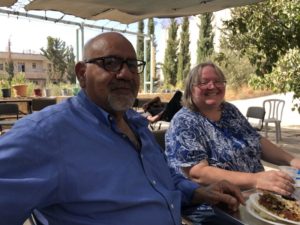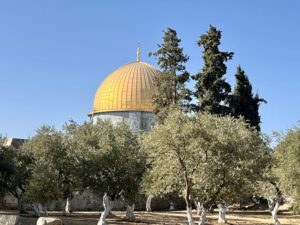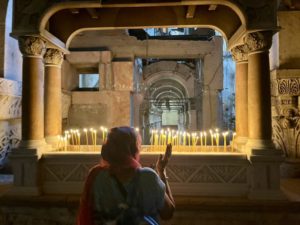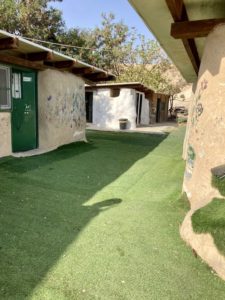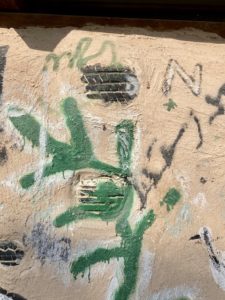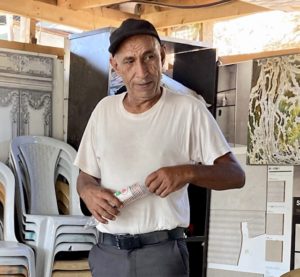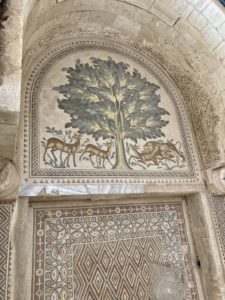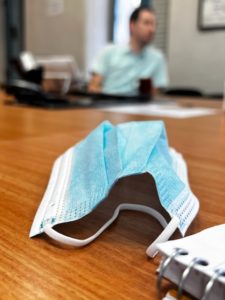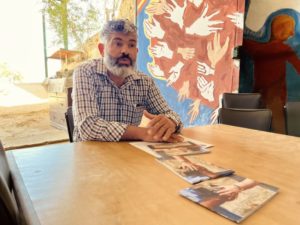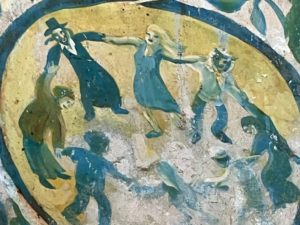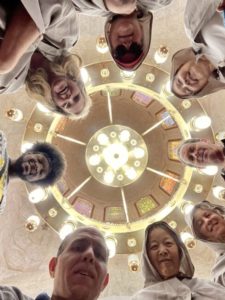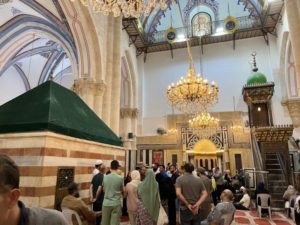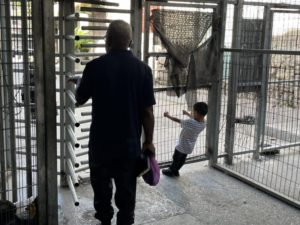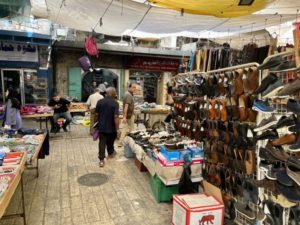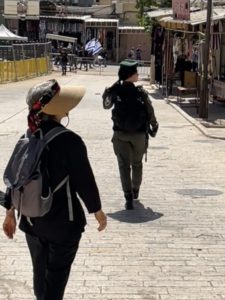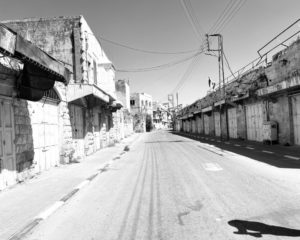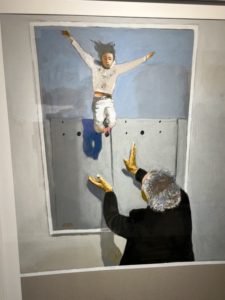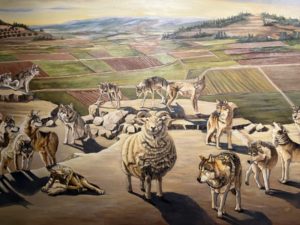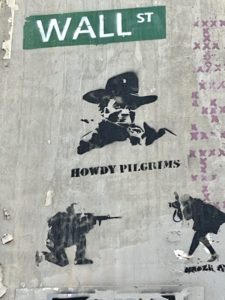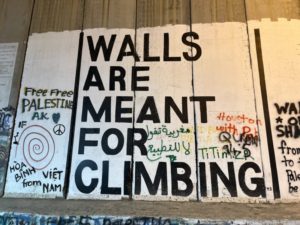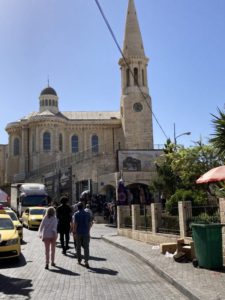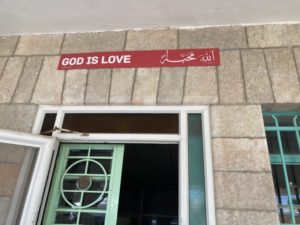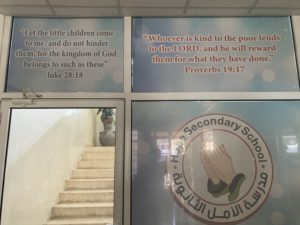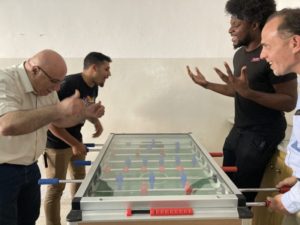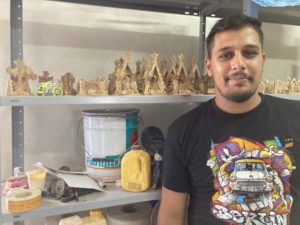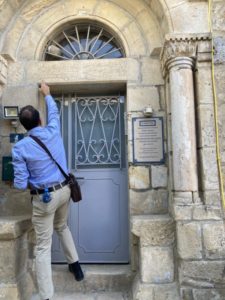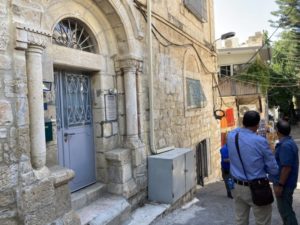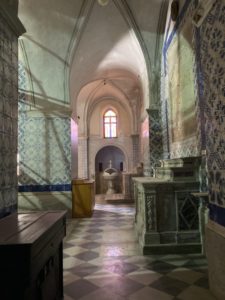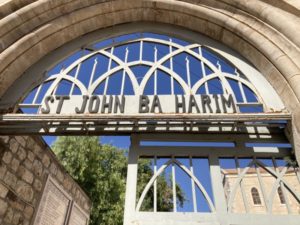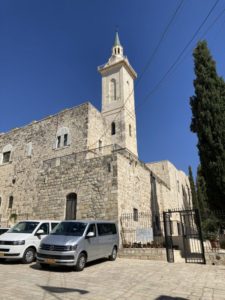We Are Here, But We Are Not All Here- Saturday October 8
We are in Ibillin now, safe and fed, but we are not all here. Zoughbi, our brother and host, remains on the other side of the line. This land, with all its layers of conflict is this week also layered with Holy Days that, in the awful irony of the Land we insist on calling Holy, only heighten the tensions. Jewish High Holy Days are transitioning to Succot. It is the Sabbath. It is Mohammad’s birthday. It is too much.
(Zoughbi with wife Elaine recently at Wi’am – The Palestinian conflict Transformation Center in Bethlehem he founded)
Our task, we knew, was to get through the West Bank checkpoints and into Israel by 4 pm, when the crossings would close. We were doing well on that count. We had marveled at the working farms of the upper West Bank—the tractors chugging by, the bent backs of workers in the fields, the families in the orchards to harvest their olives. We had enjoyed the phenomenal acoustics of the Roman amphitheater in Sebastia, where your own voice comes back to envelop you with stunning, ancient perfection. We had delighted in one of our best meals yet, served, no less, by an ardent ‘Bama Crimson Tide fanatic.
Yes, there were troubles, mournful, daunting troubles. The refugee camps in Jenin and elsewhere were being roiled; young people were dying every day. Drones were up and seeking. But Zoughbi was making every effort to steer us safely through, away from the unrest and the deadly response, and out by 4pm.
We arrived at the first checkpoint just before 2 pm, but were shunted off for further inspection. Zoughbi, whose seat near the back felt suspicious to the border agents, was taken off the bus, interviewed briefly, and found to hold inadequate paperwork for such a fiery day. We were turned around.
We headed south and west to Qalqilya, a less troubled area. But this time, advised by a phone call, Zoughbi would cross on foot while our driver took the bus over. We made it. Zoughbi didn’t. He phoned us to say that we should go on to Ibillin, and he would join us when he could. It was what he wanted. It made sense. We did it. It felt awful, and it still does.
The temptation is to tie this up with something nice and reassuring. A lesson learned; perspective gained. But the camps are still roiling; the response is still deadly. Life is messy. That’s not something where I can offer an easy reassurance. Someone else deserves the last word. At this writing, Zoughbi is somewhere between Ramallah and Bethlehem, and has sent us this: “my trip was nothing in comparison to my wife’s deportation in 2019 which took 62 hours”!
Steve Fietz
(Update on Sunday October 9) – Our friend Zoughbi was able to join us today. He spent the rest of yesterday going back to Bethlehem for the night and then left at 4:30 am today by bus for Tiberias on the Sea of Galilee where we picked him up at 9:30 am.

